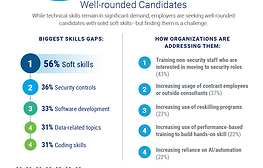Cybersecurity News
Cybersecurity workforce minimally impacted by pandemic, but still grappling with persistent hiring challenges
State of Cybersecurity 2021 report finds that 61% of cybersecurity teams are understaffed
May 4, 2021
Sign-up to receive top management & result-driven techniques in the industry.
Join over 20,000+ industry leaders who receive our premium content.
SIGN UP TODAY!Copyright ©2024. All Rights Reserved BNP Media.
Design, CMS, Hosting & Web Development :: ePublishing











